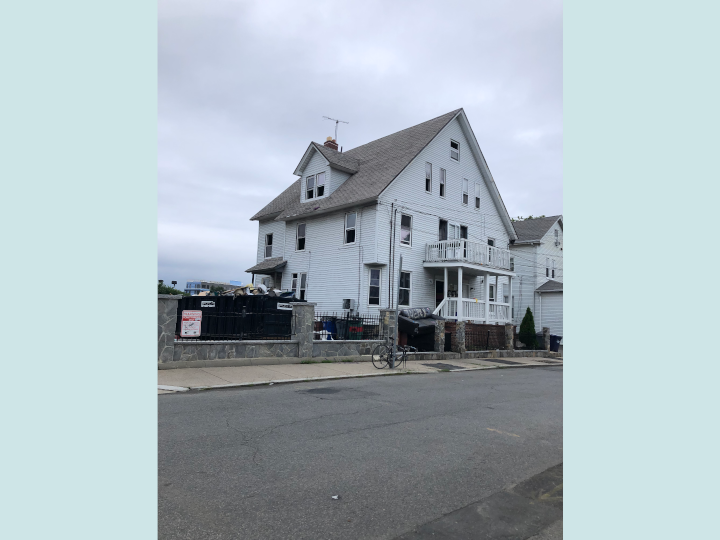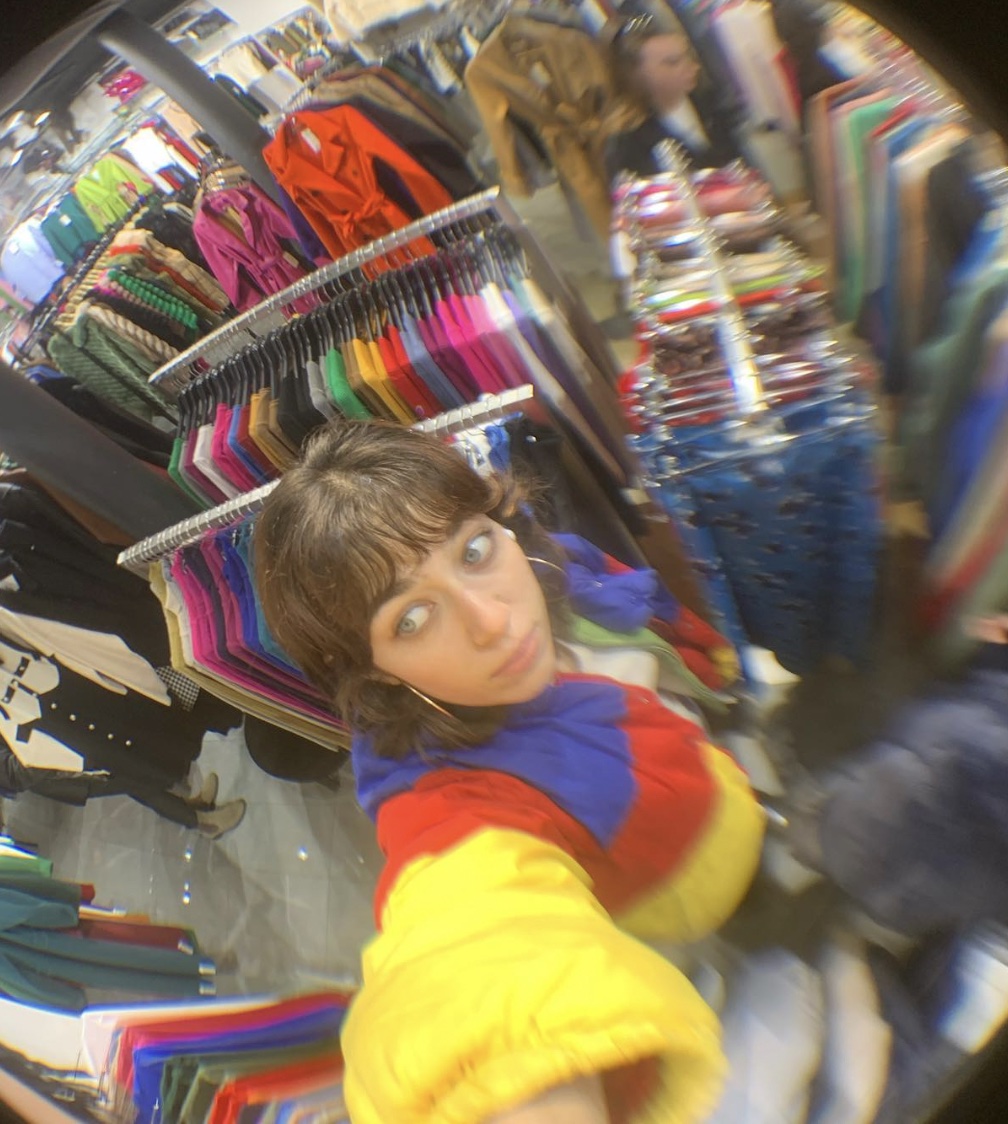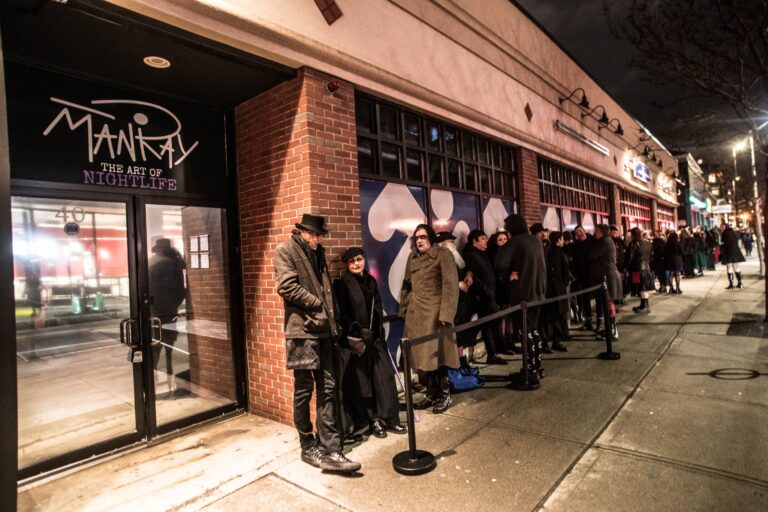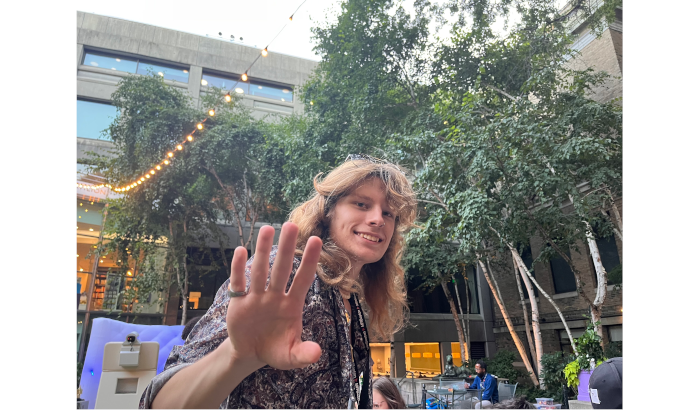An attempted farewell to the Ram Ranch punk house
Eight Pratt Street in Allston was known to its neighbors as “the scary house.” It stood out—not for its raucous partying or nondescript suburban design, but for its habit of shooting fireworks near other people’s houses. Though these pesky habits did not win them any fans locally, they added to its mythos as the legendary Boston punk house Ram Ranch.
Ram Ranch shut its doors this last July, marking the end of a staple venue in the Boston punk scene. Five months later, the house is near to completing its transformation into a luxury apartment complex. Boston punks and former Pratt street neighbors struggle with how to commemorate the space, especially when most punks begin and end their recollections with the excessively informative phrase “you had to be there.” These conversations speak to the question of where punk can exist in Boston’s rapidly changing landscape, contending with forces of gentrification and an ever-evolving music scene.
Ram Ranch
The exact origins of Ram Ranch are murky and speak to the challenge of trying to pin down a punk history. One 2014 forum post claims it was the work of “crusty old punks” who have been hosting shows in the basement for around 25 years.
More recent inhabitants of the house, like musicians Adam Weber and Jessica Campbell, point to its true inception being in 2018, when enough punk musicians moved to incite the level of chaos it required.
One thing is set in stone, however—the house got its name from the 2012 gay cowboy anthem “Ram Ranch” by outsider musician Grant MacDonald, which features an explicit discussion of a gay orgy at a ranch over heavy metal music. The song became a meme, and was recently utilized by Canadian leftists to troll far-right protests in Ottawa. For this Boston punk house’s purposes, the title of Ram Ranch gave the space a sense of humor, while retaining its brash counter-cultural stance.
According to Campbell, whose punk band the Lousy got its start there, the mission of Ram Ranch was simple: “to host as many shows as possible, and to have as much fun as possible.”
The house lived up to this purpose. It became one of the longest running Boston punk venues of the 2010s, hosting transgressive punk acts such as Generation Suicide, True Sounds of Liberty, and Who Killed Spikey Jacket?
Photographer Rachel Eve described the shows as “extremely energetic, dirty sweaty fun in a tiny basement.” There was a constant flux of different kinds of people—college students, skaters, even the occasional lost resident of New Hampshire—coming together to mosh, but not so hard they’d hit their heads on low hanging basement pipes.
“When you were in the house itself, you could feel it coming off the walls,” said Eve, who photographed the Boston punk scene in the late 2010s. “It’s very hard to describe unless you were there. You could tell between all the people and all the occupants, there was an energy, and the energy contributed a lot to its legacy and the lore.”
Ram Ranch held its last show in July, its inhabitants vacated the house due to issues concerning unpaid rent. There is now no way to “be there.” And yet, the phrase “you had to be there” came up repeatedly in conversations with former inhabitants and frequenters of the space. The magic of Ram Ranch, according to them, could only be truly known to those that were there.
It makes sense that punks would be secretive about Ram Ranch. Underground venues like Ram Ranch are, after all, illegal and face continual opposition from police and government authorities. Nate Homan, a punk journalist and frequenter of these spaces, remembers an incident where the Boston Police tried to infiltrate punk spaces through a very clumsily-worded Reddit post.
This brings us to the central issue at the core of this attempted history of Ram Ranch—how do you remember something that does not want to be remembered? How can you “be there?”
One strategy is asking the neighbors.
The Fireworks Incident
Pratt Street, an area notorious for its frats and partying, had not much standing to be perturbed by the casual chaos of Ram Ranch. Moreover, the neighborhood of Allston itself (at least for the present moment) is known for its grime and hard edge. But the punk house was not without its controversy within the neighborhood—controversy that speaks to the rapidly evolving question of who Allston belongs to.
The chaos of Ram Ranch extended beyond the musicians they hosted, and was well known on the street. “We had these fake $100 bills covered in poop,” said Campbell. “When it would be a college night where everyone was walking out and about, we would put one on the ground and wait for someone to pick it up and some people would. When it was the fake hundreds, they would. We caught some people trying to scrape the poop off of it.”
Among Pratt residents, there were rumors floating around that the house’s sink broke because too many people were having sex on it. “I think it broke because someone had sex on it like one time,” said Campbell. “I don’t think it broke because people were doing it a lot.” Campbell also described a “new furniture party” in which they set an old couch on fire, and “sat on the couch as it was engulfed in flames and saw who could last the longest.”
“A lot of college parties happened on our street,” recalls former neighbor Penelope Hill, “so they weren’t the only ones. But theirs were always the craziest and most packed.” One particular incident in the summer of 2022 brings insight into how the punk house—which was mainly frequented by punks in their late 20s—operated within a neighborhood defined by college student debauchery.
“Fireworks were always a big thing,” recalls Campbell. “The biggest tradition was lighting them up in the back lot.”
Hill, who lived on Pratt Street from 2022 to 2023, remembers the fireworks particularly well. “There was a pretty long stretch, especially over the summer, where they would turn on fireworks all the time and not just like any old fireworks, it sounded like they were like bombs,” recalled Hill. “Like I would wake up in the middle of the night. It was really, really, really loud.”
As it turns out, some were bombs. “We had a stationary bomb,” Campbell admits, which she went on to describe as “an actual little mini bomb. It was basically a stick of dynamite.”
“We were annoying people,” said Campbell. “I’ve definitely shot fireworks into the house across the street, but not into it, not inside of it—other people’s yards in the street, or in our backyard.”
But Hill recalls one particular incident when a firework flew too close to a neighbor’s window, which led to a confrontation. “One of the guys came out onto the street and was screaming at them to stop the fireworks. He was wearing boxers, no shoes, and was obviously a little bit drunk,” said Hill.
“We started yelling out our window because we agreed and supported our man. Then one of the guys from Ram Ranch came out. He was like, oh, what are you gonna do about it? And then they just got into a fistfight and a ton of people came out of Ram Ranch and they were all just kind of surrounding him,” said Hill. “It was the messiest fight ever. They would throw him in the bushes and he was fine. But he definitely got scratched up.”
Hill recalled that someone eventually called the police, and the situation got shut down without much more upheaval. Other than this incident, Hill and the other neighbors I spoke to did not indicate any other sign of larger tensions between the punk venue and its neighbors.
But the fireworks incident nonetheless speaks to the strangeness of Allson as a collision of different demographics, and its evolution from an area known for its rock music to a college neighborhood—a neighborhood whose future is now in question with Harvard rapidly encroaching.
A Brief History of Punk in Allston
Ram Ranch is one of many underground punk venues that bloomed in the wake of the 2008 financial crisis. As a city defined by its transient student population, Boston became a prime space for DIY spaces like Platonic Sleepover House, The Tourist Trap, and Ram Ranch to emerge. The 2020 documentary “Boston Basement Brigade” attributed the rise to these underground venues to widespread unemployment, cheap rent in Allston flop houses, and the refusal of mainstream clubs to host edgier musicians.
But the future of these venues has come into question. According to an analysis by the Harvard Crimson, home prices in Allston increased by 43% and rent increased by 36% from 2011 to 2019. There are significant concerns among Allston residents that this problem will only worsen, particularly with Harvard University’s encroachment upon the neighborhood.
Harvard University is currently the largest single landowner in Allston, and some experts have indicated that Harvard’s expansion has contributed to the increase of rental prices. Though the university has announced plans to build affordable housing, its presence in the neighborhood has nonetheless contributed to the displacement of its residents.
Ram Ranch’s closure was, in part, due to unpaid rent. Inhabitants of the house offer conflicting accounts of their relationship with their landlord, but Campbell claims the house’s exit was a relatively calm process.
“We fell back on rent and they wouldn’t renew our lease,” said Campbell. “But the landlord was pretty chill. He tolerated a lot and he actually helped me not have to pay a shit ton of money. ”
Lineage Reality, the company in charge of the 8 Pratt property, did not respond to requests for comment from HorizonMass.
The construction of an apartment complex where a punk house once stood is a stark example of the changing nature of the Allston neighborhood.
But it is important to not conflate the changing nature of the punk scene with the vast consequences of gentrification. The ousting of punks at Ram Ranch is not equivalent to the displacement of many Black and brown communities as a consequence of Boston’s rapid gentrification. Though both are impacted by rising rent costs, the former could be explained by cyclical changes in the music scene.
And this is not the first time the Allston neighborhood has experienced a cultural upheaval. In the 1960s, 70s and 80s Allston was known as “Rock City” due to its many music venues, including Great Scott and O’Brien’s Pub, as well as its population of young artists.
But when the Rat in nearby Kenmore Square closed in 1997, local clubs began to shift away from the underground scene. The next decade saw many iconic Boston rock venues like Harper’s Ferry shut their doors and the remaining clubs like Brighton Music Hall shifted away from underground bands. Forces like gentrification and subsequently changing demographics played a role in the closure of these clubs.
“There’s very little sympathy for the “Rock City” crowd being displaced because that crowd did the same in the 1960s and 1970s,” said Charlie Vasiliades, vice president of the Brighton Allston Historical Society, in an interview with the Huntington News. The next generation of punks did not need these venues, as they had begun playing in basements.
The end of Ram Ranch marks a potential shift in the way punk music is consumed in Allston. The question is, in a city defined by transience, where will the next generation of punks go?
“You Just Missed It”
When asked about the future of the Boston punk scene given Ram Ranch’s closing, Campbell said, “It’s still fun, but there’s a huge piece missing because the Ram Ranch, in my opinion, was the last true chaotic, really shitty, punk house.”
The shift towards less “shitty” music venues is an unfortunate reality. Consider startups like Sofar Sounds, a music event company that, according to its website, “transforms everyday spaces—like a rooftop or art gallery—and turns them into captivating, intimate venues for secret, live music performances.” The emergence of these kinds of startups offer a dark, Black Mirror-esque contrast to the chaos of the underground punk venues.
“When Sofar came on, I thought it was my worst nightmare: The tech industry co-opting house shows for profit,” said librarian and punk historian Chris Strunk in an interview with Allston Pudding. “But that will continue. People were still doing house shows all the way through the beginning of the pandemic—not as many, but they were still strong.”
With the rapidly changing landscape of Boston and the shuttering of iconic venues, the urge to declare an end to real punk music is strong. But it is important to remember that this urge is not new, and that there has consistently been a new generation of musicians around the corner with a new (and not necessarily corporate) way of doing things. Consider Cuckfest, which HorizonMass covered recently.
“Chisel this one into stone: ‘You just missed it’ is everybody’s retelling of the punk scene anywhere in the world,” said Nate Homan. “You just missed it, you just missed shows there, I just missed the Rat, you just missed [Ram Ranch]. The thing is that there is always someplace new that pops up. There’s always someplace that you get to talk about that you just missed it. That is every story from the punk scene.”
This is a phrase I heard quite frequently in my attempts to report on the recent shuttering of the chaotic underground punk venue Ram Ranch. “You just missed it” or even the insanely edifying, “You had to be there.” The Boston punk scene, by its very nature as a subculture pushed to underground spaces, is not one easily recorded. But its historic and continuing presence remains as one of the most defining and interesting cultural movements of Boston.
So how does one remember something that does not want to be remembered? Well, if we are to take Homan’s advice, it is through embracing the next “it” with open arms. Whether that “it” can emerge in a city experiencing a housing crisis and widespread inequality is a different question, but Homan has hope for future generations of punks.
“In order for people to say that ‘You had to be there,’” said Homan, “You have to be there in the present.”
This article was produced for HorizonMass, the independent, student-driven, news outlet of the Boston Institute for Nonprofit Journalism, and is syndicated by BINJ’s MassWire news service.
Sabine Ollivier-Yamin is a HorizonMass associate editor and reporter. She is a Boston based arts and culture writer interested in the comedy beat. Ollivier-Yamin has written for the Daily Free Press, the Bunion, Gold Comedy, and the Core Journal. She is also a great pedestrian, she always pays attention to street signs.






